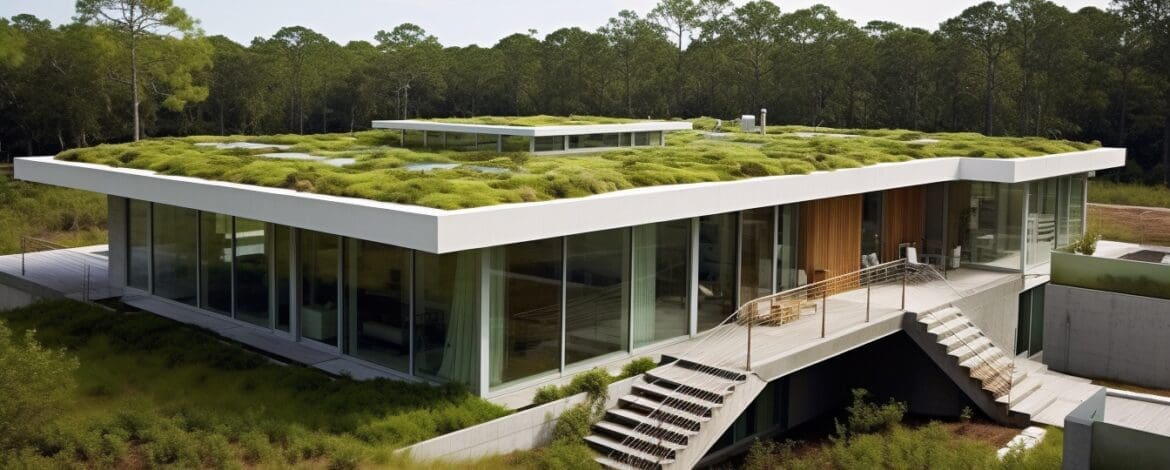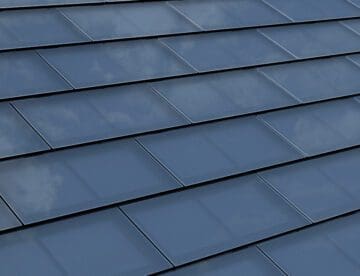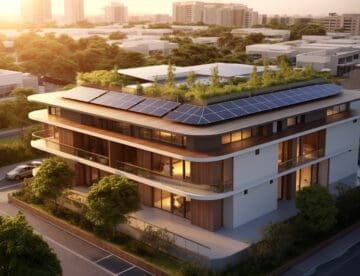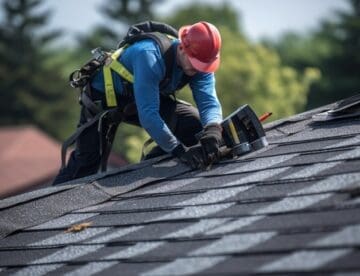Installing a green roof in Florida is a great way to enhance the beauty of your home and contribute to a more sustainable environment. However, the right preparation is vital to ensure your green roof project is a success. This article outlines several important steps to take to prepare to install a green roof in the Sunshine State.
Green roofs are becoming ever Florida due to their ability to combat intense heat, reduce energy bills, and mitigate the urban heat island effect. Also, a vegetative roof improves energy efficiency, reduces stormwater runoff, and increases biodiversity. In the long term, a green roof can help homeowners save hundreds of dollars in lower utility bills and costly repairs.
Please read on to discover the essential steps to plan and prepare for green roof installation. You’ll also learn to navigate local government and Homeowners Association (HOA) regulations. Additionally, practical tips will help ensure you create a beautiful and sustainable rooftop oasis.
Why Green Roofs Are a Great Choice for Florida Homes
Florida’s unique climate means homes in the Sunshine State benefit from green roof technology. A green roof comprises a waterproof membrane, a layer of growing substrate, and vegetation like grass or plants. The benefits of green roofs in the southeastern United States are stormwater management, energy conservation, and improved aesthetics.
The University of Florida reports that green roof construction has several financial and environmental benefits. These include the following:
- Energy savings between 15% and 30%
- Increased roof lifespan and lower roof maintenance costs
- Reduce stormwater runoff by 50% to 85%
- Lower roof surface temperatures by up to 50%
- Increase biodiversity
- Reduce the heat island effect
According to some reports, green roof systems can save homeowners up to 50% on cooling costs in the hottest summer months. Over the 40-year lifespan of a typical green roof space can save you around $200,000 in reduced energy costs.
Evaluating Your Home’s Suitability for a Green Roof
Assessing the suitability of your existing roof is vital if you are considering installing a green roof. Green roofs need a sturdy roof structure. They work best on sunny roof areas with a gradual slope. However, you can also install one on a roof with steeper slopes if there is extra support.
Extensive green roofs are well-suited to residential properties. They are lightweight and support low-growing plants, making them easy to install and maintain.
Getting a professional evaluation is the first step when installing a green roof. A licensed contractor will evaluate your current roofing system and determine the optimal green roof solution for your property. They can also identify potential issues and recommend suitable modifications to ensure seamless integration of green roofing elements.
Understanding Local Government Regulations
Regulations governing green roof installation vary among municipalities and states. Also, green roofing technology constantly evolves, and building codes and permit requirements can change. Therefore, getting a professional assessment is vital.
Many municipalities have incentive schemes for homeowners to make eco-friendly upgrades to properties. However, the green roof may need to meet specific specifications to qualify for rebates or get a building permit.
For example, Hillsborough County regulations state that you must “demonstrate that the roof can support the additional load of plants, soil, and retained water.” Also, roof vegetation must remain for the life of the building.
Compliance with legal and safety requirements when installing a green roof in Florida is paramount. Failure to do so can be costly and dangerous. This could result in fines and even removal of the green roof. Additionally, a lack of safety measures can put individuals at risk of injury or death.
Navigating Homeowners Association (HOA) Guidelines
Homeowners Association (HOA) regulations can make installing green roofing tricky. HOA guidelines aim to maintain the community’s overall appearance, value, and harmony. The guidelines may cover landscaping requirements and green roof installations. Therefore, you should check with existing guidelines to see whether they address green roofs.
Here are a few tips on negotiating with an HOA on installing green roof components:
- Communicate with the HOA early in your planning.
- Provide the HOA with a comprehensive plan of the proposed green roof design and its potential benefits over a traditional roof.
- Highlight environmental benefits like energy efficiency, stormwater management, and enhanced biodiversity.
- Involve certified professionals in your proposal to lend credibility to the project.
- Provide a clear maintenance plan, addressing concerns about potential long-term issues, such as leaks or overgrowth.
Choosing the Right Type of Green Roof
The two main types of green roofing are extensive roofs and intensive roofs. The difference is the amount of vegetation in the green space.
Extensive green roof system
This is a low-maintenance, lightweight living system with shallow soil depths. Typically, the soil layer is less than six inches deep. It is ideal for biodiversity and stormwater management. The roof grows drought-resistant plants like grasses, wildflowers, and sedums. It provides insulation and ecological benefits while minimizing structural load.
Intensive green roof system
This roof type is a lush, garden-like rooftop area with deeper soil layers. It can accommodate a diverse range of plants, including trees and shrubs. This system usually suits a flat roof on a commercial building, where people can enjoy the garden and other features. As its name suggests, the green roof surface requires intensive maintenance.
Extensive green roofing systems are suitable for many residential properties.
Selecting a Qualified Green Roofing Contractor
Selecting a contractor with a proven track record in green roof assemblies is vital. Remember, this is a relatively new technology. So, not all roofing contractors have the necessary expertise or experience in the green roof industry.
Here are a few tips on finding the best local roofing professional for green roof installation:
- Check to ensure the contractor has certifications in green roofing or sustainable construction.
- Review their portfolio for completed green roof or cool roof projects.
- Obtain and check references from previous clients and check out online reviews.
- Verify the contractor has comprehensive liability insurance.
- Ensure the contractor understands local regulations and can obtain the necessary permits for green roof installations.
- Obtain assurances about warranties for materials and quality regarding the green roof’s durability.
Pre-Installation Checklist
Green roof construction is more complicated than installing a traditional roof. Therefore, you should work closely with the contractor to ensure they use the appropriate material.
Here are a few things to discuss with the roofing company:
- Compliance with local building codes and regulations.
- Choose the appropriate roof membrane to ensure roots don’t penetrate it.
- Choose the best plants that thrive in Florida’s unique climate.
- Enquire if you can use water runoff for landscape irrigation.
- Inform neighbors of potential disruptions during the construction.
- Be prepared to talk about green roof benefits with your neighbors.
Takeaways for Preparing for a Green Roof Installation
Advances in green roof research mean this type of eco-friendly, sustainable roofing system is possible for many residents in Florida. Green roof assemblies offer many benefits, from reduced energy consumption to lower utility costs and increased sustainability. However, to ensure the roofing eco-friendly system lasts its lifespan, hiring a professional contractor with experience in installing green roof modules is vital.
For more information on green roofing options in your area, please check out the article Revolutionizing Roofs with Green Solutions.




